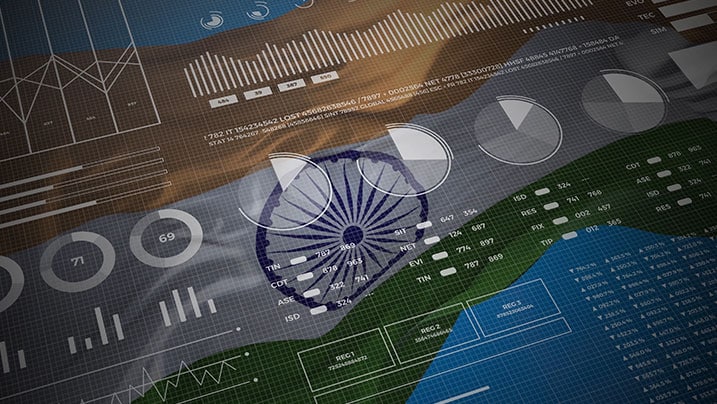CKYC Registry
-
Customer Service Contact us Service request Locate a branch
Find all the help you need
Scan the QR, get our app, and find help on your fingertips

Help CenterSupport topics, Contact us, FAQs and more
-
Login
Are you ready for an upgrade?
Login to the new experience with best features and services
-
Login
Are you ready for an upgrade?
Login to the new experience with best features and services
- Accounts
-
Deposits
IDFC FIRST Bank Deposits
View all Deposits -
Loans
IDFC FIRST Bank Loans
View all Loans - Wealth & Insure
-
Payments
IDFC FIRST Bank Payments
View all Payments -
Cards
IDFC FIRST Bank Cards
View all Cards - Blogs
- Corporate Account
-
Cash Management Services
IDFC FIRST Bank Cash Management Services
View all Cash Management Services - Supply Chain Finance
-
Corporate Lending
IDFC FIRST Bank Lending
View all -
Treasury
IDFC FIRST Bank Treasury
See more details - NBFC Financing
Support topics, Contact us, FAQs and more
- IDFC FIRST Bank Accounts
-
Savings Account
-
Corporate Salary
Account -
Senior Citizens
Savings Account -
First Power
Account -
Current Account
-
NRI Savings
Account -
TASC Institutional
Account -
Savings Account
Interest Calculator
- IDFC FIRST Bank Deposits
-
Fixed Deposit
-
Recurring Deposit
-
NRI Fixed Deposit
-
Safe Deposit Locker
-
FD Calculator
-
RD Calculator
- IDFC FIRST Bank Loans
-
Personal Loan
-
Consumer Durable
Loan -
Home Loan
-
Business Loan
-
Professional Loan
-
Education Loan
-
New Car Loan
-
Pre-owned Car Loan
-
Two Wheeler Loan
-
Pre-owned Two
Wheeler Loan -
Commercial Vehicle
Loan -
Gold Loan
-
Loan Against Property
-
Loan Against Securities
-
Easy Buy EMI card
-
Personal Loan
EMI Calculator -
Education Loan
EMI Calculator -
Home Loan
EMI Calculator -
EMI Calculator
-
Personal Loan Eligibility Calculator
- IDFC FIRST Bank Wealth & Insure
-
FIRST Select
-
FIRST Wealth
-
FIRST Private
-
Mutual Funds
-
Sovereign Gold Bond
-
Demat Account
-
Term Insurance
-
Life Insurance
-
Health Insurance
-
General Insurance
-
Bonds
-
Loan Against
Securities -
Portfolio Management
Service
- IDFC FIRST Bank Payments
-
FASTag
-
Credit Card
Bill Payments -
UPI
-
Funds Transfer
-
Forex Services
-
Pay Loan EMI
- IDFC FIRST Bank Cards
-
Ashva :
Metal Credit Card -
Mayura :
Metal Credit Card -
FIRST Millennia
Credit Card -
FIRST Classic
Credit Card -
FIRST Select
Credit Card -
FIRST Wealth
Credit Card -
FIRST WOW!
Credit Card -
Deals
-
Debit Cards
-
Co-branded Cards
-
Credit Card
EMI Calculator -
FIRST Corporate
Credit Card -
FIRST Purchase
Credit Card -
FIRST Business
Credit Card
- Premium Metal Credit Cards
-
AshvaLifestyle1% Forex₹2,999
-
MayuraLifestyleZero Forex₹5,999
-
FIRST PrivateInvite Only
- Best for travellers
-
MayuraZero ForexMetal₹5,999
-
Ashva1% ForexMetal₹2,999
-
FIRST WOW!Zero ForexTravelLifetime Free
-
FIRST SWYPTravel OffersEMI₹499
-
FIRST Select1.99% ForexLifestyleLifetime Free
-
FIRST Wealth1.5% ForexLifestyleLifetime Free
-
Club VistaraTravelLifestyle₹4,999
-
IndiGo IDFC FIRST Dual Credit CardTravelLifestyle₹4,999
- Max benefits, Free for life
-
FIRST Classic10X RewardsShoppingNever Expiring Rewards
-
FIRST Millennia10X RewardsShoppingNever Expiring Rewards
-
FIRST Select10X RewardsLifestyle1.99% Forex
-
FIRST Wealth10X RewardsLifestyle1.5% Forex
-
FIRST WOW!RewardsTravelZero Forex
-
LIC ClassicRewardsInsuranceShopping
-
LIC SelectRewardsInsuranceShopping
- Reward Multipliers
-
AshvaLifestyleMetal₹2,999
-
MayuraLifestyleZero Forex₹5,999
-
FIRST ClassicNever Expiring RewardsShoppingLifetime Free
-
FIRST MillenniaNever Expiring RewardsShoppingLifetime Free
-
FIRST SelectNever Expiring RewardsLifestyleLifetime Free
-
FIRST WealthNever Expiring RewardsLifestyleLifetime Free
- Rewards & Credit on UPI
-
FIRST Power+FuelUPI₹499
-
FIRST PowerFuelUPI₹199
-
FIRST EA₹NVirtual1% Cashback₹499
-
FIRST DigitalVirtualUPI₹199
-
IndiGo IDFC FIRST Dual Credit CardUPITravelDual cards
- Fuel and Savings
-
FIRST PowerRewardsUPI₹199
-
FIRST Power+RewardsUPI₹499
-
LIC ClassicRewardsInsuranceShopping
-
LIC SelectRewardsInsuranceShopping
- Express and Flaunt
-
AshvaMetal1% Forex₹2,999
-
MayuraMetalZero Forex₹5,999
-
FIRST SWYPEMIOfferMAX₹499
-
FIRST MillenniaRewardsShoppingLifetime Free
- FD Backed rewarding Credit Cards for all
-
FIRST EA₹NVirtualCashback₹499
-
FIRST WOW!Zero ForexTravelLifetime Free
-
CreditPro Balance TransferTransfer & SaveReduce InterestPay Smartly
- IDFC FIRST Bank NRI Forex Solutions
-
Send money to India-Wire transfer
-
Send money to India-Digitally
-
Send money abroad
-
Max Returns FD (INR)
- IDFC FIRST Bank MSME Accounts
-
Platinum Current
Account -
Gold
Current Account -
Silver Plus
Current Account -
Merchant Multiplier
Account -
Agri Multiplier
Account -
TASC Institutional
Account -
Dynamic Current
Account -
World business
Account -
First Startup
Current Account
- IDFC FIRST Bank Business Loans
-
Business Loan
-
Professional Loan
-
Loan Against Property
-
Business Loan for Women
-
Working Capital Loan
-
Construction Equipment Loan
-
Machinery Loan
-
Healthcare Equipment Loan
- IDFC FIRST Bank Business Solutions
-
Payment Solutions
-
Tax Payments
-
Doorstep Banking
-
Point of Sale (POS)
-
Escrow Accounts
-
NACH
-
Payment Gateway
-
UPI
-
Virtual Accounts
-
As per amendment in the Income Tax Rules, PAN or Aadhaar are to be mandatorily quoted for cash deposit or withdrawal aggregating to Rupees twenty lakhs or more in a FY. Please update your PAN or Aadhaar. Kindly reach out to the Bank’s contact center on 1800 10 888 or visit the nearest IDFC FIRST Bank branch for further queries.
-
-
Most Searched
Sorry!
We couldn’t find ‘’ in our website
Here is what you can do :
- Try checking the spelling and search
- Search from below suggestions instead
- Widen your search & try a more generic keyword
Suggested
Get a Credit Card
Enjoy Zero Charges on All Commonly Used Savings Account Services
Open Account Now
The evolution of the banking industry has played an indispensable role in the development of the Indian economy. With every phase, the industry has adapted and diversified itself to make customers' financial lives easier and smoother while sustaining itself in the global economy.
The banking industry dates back to the ancient world circa 1000 BC and has undergone many innovations to reach its current position in the global economy. What started as a simple barter system and gift economy has metamorphosed into a technology-driven and internet-based globalised banking system. The industry's progress in every aspect can also be seen in the Indian banking system. The changes in banking over time can be looked at in the following phases.
Phase 1: Pre- and early post-Independence
Banking in India started in the 1700s. However, in the early days, the primary goal was to establish new banks and make the banking sector a relevant presence in Indian society. The pre-independence phase saw about 600 banks working together to make the nation's economy more robust by bringing in some considerable developments.
Bank of Bombay is considered to be the first bank in India, set up in 1720, while Bank of Hindustan, which is seen as one of India's first modern banks, was founded in Calcutta in 1770 only to shut operations in 1832. Few banks established in the mid-1800s merged and called themselves Imperial Bank of India. The collective eventually came to be known as State Bank of India. This period also saw the formation of several private banks, some of which are still operating today. Apart from the establishment of the banking system, the emergence of commercial banks and the merger of banks can be seen as significant developments of this era.
READ MORE
Phase 2: Nationalisation to Liberalisation
In this post-independence phase, the banking industry in India went through a significant transformation as 14 commercial banks were nationalised in 1969. The move was meant to build customer confidence amongst those sceptical about private ownership of banks. Additionally, nationalisation opened up plans to establish more branches and expand the banking sector in India. Later in 1980, six more banks were nationalised. The following financial institutions were established to add more purpose to the banking system and address more specific segments:
- NABARD to aid agricultural activities
- EXIM to develop exports and imports
- National Housing Board to fund housing projects
- SIDBI to finance small-scale Indian industries
Set up as special purpose vehicles to drive the mentioned industry to sector, these banks added a new angle to how banks were used as a part of national policies.
Meanwhile, Mumbai got its first automated teller machine (ATM) in 1987. Since then, ATMs have steadily increased, offering customers the convenience to withdraw money anytime. Today, ATMs provide various other facilities like account balance checks, bill payments, cash deposits, etc.
Post -Liberalisation Era (1991 – till date)
Since 1991, the Indian banking industry has gone through some radical changes. For starters, the government allowed private investors to invest in India. After liberalisation, the RBI approved 10 such private banks. IDFC FIRST Bank received its license in 2013-14.
There were other remarkable changes seen during this phase. The Indian government approved foreign investment, paving the way for international banks to open their branches in India. Small finance banks received permission to open branches throughout the country, and payment banks also came into existence. With these changes, important developments in technology have emerged and continue to evolve the banking industry.
Emerging Trends in India's Banking Sector
The use of core banking can be seen as a stepping stone to modern technological developments in banking. Thanks to these developments, customers no longer need to visit their home branches for basic banking tasks. They can transact core banking facilities from the nearest bank branch instead.
With the emergence of technology, things have now gone online, allowing customers to access banks 24X7, at their convenience and from almost anywhere. Digital and mobile banking support this concept by letting customers access various banking products, services and facilities from mobile devices. For banks, it means having to provide minimal human intervention, and for customers, it means being able to stay on top of their finances from anywhere.
Of course, the internet also plays a vital role by providing knowledge about financial products and services. For instance, today, an IDFC FIRST Bank customer does not have to stand in a long queue to get their accounts settled, passbook updated or send money to someone. These can all be done by tapping a few buttons. Even applying for loans has become more accessible with online loan facilities without compromising a customer's financial and personal data.
Conclusion
The Indian banking sector continually evolving has enhanced the entire customer experience journey, from opening an account to accessing all kinds of services. As the world gradually recovers from the COVID-19 pandemic and adopts even better technology, customers can expect banking to witness further developments in the years to come.
Disclaimer
The contents of this article/infographic/picture/video are meant solely for information purposes. The contents are generic in nature and for informational purposes only. It is not a substitute for specific advice in your own circumstances. The information is subject to updation, completion, revision, verification and amendment and the same may change materially. The information is not intended for distribution or use by any person in any jurisdiction where such distribution or use would be contrary to law or regulation or would subject IDFC FIRST Bank or its affiliates to any licensing or registration requirements. IDFC FIRST Bank shall not be responsible for any direct/indirect loss or liability incurred by the reader for taking any financial decisions based on the contents and information mentioned. Please consult your financial advisor before making any financial decision.
The features, benefits and offers mentioned in the article are applicable as on the day of publication of this blog and is subject to change without notice. The contents herein are also subject to other product specific terms and conditions and any third party terms and conditions, as applicable. Please refer our website www.idfcfirstbank.com for latest updates.























